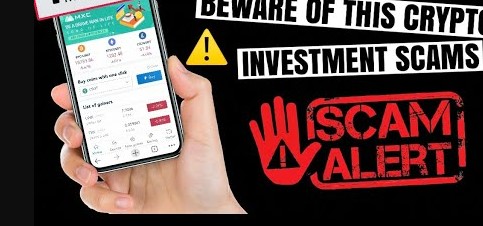FX-Magna.com Scam Review -Polished Interface, Familiar Script
FX-Magna.com looks and speaks like a modern online trading service, but the profile and behavioral patterns it exhibits are very similar to many high-risk broker scams. Hidden ownership, a short online footprint, aggressive upsell tactics, opaque fees and withdrawal friction are all hallmarks that should make anyone extremely cautious. Below I unpack the red flags, the typical victim experience, how the operation likely works, and why the total pattern is so concerning.
First impressions — polished interface, familiar script
Platforms in this category invest heavily in appearance. A slick website, animated charts, “professional” copy and friendly-sounding account contacts are all part of the playbook. FX-Magna is no different: its outward presentation is designed to project legitimacy — multi-asset access, tiered accounts, and promises of smart trading tools.
That professionalism is designed to speed up trust. But design alone is cheap and superficial. Real credibility rests on verifiable regulation, transparent ownership, consistent third-party reputation, and fair, clearly stated terms. When those deeper signals are missing or inconsistent, the glossy surface becomes a trap.
Core structural red flags
Below are the principal structural warning signs that commonly appear with fraudulent brokers — and which characterize FX-Magna’s profile when evaluated against best-practice checks:
1. Opaque ownership and masked identities
Legitimate brokers publish company registration details, management bios, and contact addresses that can be independently verified. When owners are obscured behind privacy services or there’s no clear corporate entity tied to the platform, accountability evaporates. Hidden operators are a major red flag.
2. Short or inconsistent online footprint
Established financial services leave a public trail: press coverage, regulator entries, long-running reviews, and community references. New domains with little verifiable history — especially when paired with aggressive marketing — are often ephemeral operations launched to harvest deposits quickly and then vanish.
3. No verifiable regulation or unsubstantiated compliance claims
Trustworthy brokers clearly state the regulator(s) they’re licensed by and provide license numbers that can be checked in official registries. Vague phrases like “we comply with global standards” without concrete registry entries often indicate manufactured credibility.
4. Ambiguous fees and bonus traps
If fees, withdrawal rules, or bonus conditions are buried in fine print or revealed only after deposit, that opacity is a deliberate design choice. Bonus schemes that sound generous but lock funds behind impossible trading volumes are a standard tactic to keep money on the platform.
5. Heavy emphasis on personal account managers
A named “account manager” calling daily, offering friendly advice and upsells, is a powerful psychological tool. In legitimate firms this role exists, but in scams the account manager’s primary function is to increase deposits, not to provide independent financial advice.
The recurring victim narrative — “easy in, hard out”
One of the strongest indicators of a scam is a consistent sequence of events reported by multiple users. For operations like FX-Magna the narrative usually follows the same arc:
-
Attraction and onboarding. Users are contacted via ads, social media, referrals, or unsolicited messages. The onboarding is quick and painless.
-
Initial deposits accepted without friction. Cards, bank transfers, and crypto are all options; money is credited to the account fast.
-
Early reinforcement. Dashboards show rising balances and sometimes allow a small withdrawal — just enough to build trust.
-
Pressure to increase deposits. Account managers push “VIP upgrades,” higher leverage, or special strategies that require extra funds.
-
Withdrawal friction appears. When a significant withdrawal is requested, new obstacles appear: surprise fees, verification demands, or conditions tied to bonuses.
-
Communication declines. Contact slows or stops, and funds remain inaccessible.
That sequence is the “trust then trap” pattern repeated across dozens of confirmed broker scams. If you see it, treat it as an operational feature, not an accident.
Common manipulative tactics used
Fraudulent trading platforms use psychological levers combined with operational tricks to extract money. Here are the most common ones observed in this sector:
-
Small early wins: Allowing token withdrawals or showing fabricated profits to reduce suspicion.
-
Urgency and scarcity: “Limited spots” or “exclusive windows” that push people to make fast deposit decisions.
-
Bonus mechanics: Bonus credits that increase apparent balance but impose huge trade volume conditions before any real withdrawal is allowed.
-
Retroactive fees: New “processing,” “tax,” or “compliance” fees that only surface at withdrawal time.
-
Account upgrades as a gating mechanism: Claiming that only upgraded or VIP accounts can access payouts, essentially forcing more deposits.
-
Steering to non-reversible payment rails: Encouraging crypto or obscure transfer channels that are hard to reverse.
All of these tactics are designed to do the same thing: convert a validated relationship into repeated inflows and then block the escape hatch.
Red flags in customer support and policy behavior
A quick, practical way to test a platform is to interact with its support before depositing, and again when you request a payout (or simulate the steps). Watch for the following behaviors:
-
Fast responses only when you’re depositing; slow or evasive when you ask for money back.
-
New documentation requests that keep expanding (send certificates, then additional proofs, then notarized docs, etc.).
-
Vague or contradictory terms in different parts of the site (homepage vs. terms and conditions).
-
Fees that appear only after a withdrawal is requested.
Those operational patterns are far more revealing than marketing language — they show how the business treats money when it flows the other way.
Payments, traceability and recovery difficulty
Platforms that prefer non-reversible payment routes (certain crypto transfers, obscure processors, or third-party intermediaries) dramatically reduce the chance of recovering funds. If a site pushes you toward crypto-only deposits or unusual transfer channels, that’s a strong practical warning: chargebacks are less likely, payment processors are harder to engage, and tracing funds becomes complex.
Why even careful people get trapped
These operations succeed because they intentionally combine technical polish with human persuasion. A professional site plus a friendly manager exploiting cognitive biases (authority, reciprocity, fear of missing out, and escalation of commitment) converts reasonable skepticism into risky action. Small initial wins reinforce belief, and the more money a person has committed, the harder it feels to step away — exactly the psychology scammers rely on.
Signs to spot immediately (quick checklist)
-
No clear, verifiable regulator or license number.
-
Ownership/WHOIS masked or impossible to verify.
-
New domain or thin online footprint.
-
Bonus offers tying funds to extreme trading volume before withdrawal.
-
Withdrawal fees or taxes that appear only after payout is requested.
-
Account manager pressure to deposit more or upgrade.
-
Requests to use crypto or obscure payment channels.
-
Inconsistent or evasive answers from support about withdrawals.
If you see several of these together, the probability of fraud is high.
The broader operational lifecycle — rebrand and repeat
One tactical advantage for fraud operators is mobility: once complaints mount, they change domain names, tweak branding, and relaunch. That transience means negative history can be short-lived unless documented widely. Recognizing patterns — not just individual brand names — is essential because the same operators often appear under multiple aliases.
Final assessment
Taking all of the above into account — structural opacity, familiar manipulation tactics, patterned user narratives about blocked withdrawals, and preferential steering toward hard-to-reverse payment rails — FX-Magna fits squarely into the profile of a high-risk operation that likely seeks to extract funds rather than provide fair, regulated trading services.
Bottom line: Treat FX-Magna as extremely risky. The combination of red flags is consistent with many confirmed fraudulent brokers and should be a strong deterrent to depositing funds or sharing sensitive financial information.
Report FX-Magna.com Scam and Recover Your Funds
If you have lost money to FX-Magna.com Scam, it’s important to take action immediately. Report the scam to Jayen-consulting.com, a trusted platform that assists victims in recovering their stolen funds. The sooner you act, the better your chances of reclaiming your money and holding these fraudsters accountable.
Scam brokers like FX-Magna.com continue to target unsuspecting investors. Stay informed, avoid unregulated platforms, and report scams to protect yourself and others from financial fraud.
Stay smart. Stay safe.






